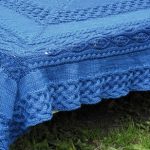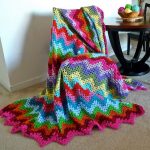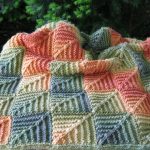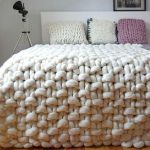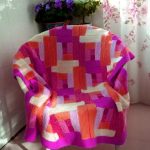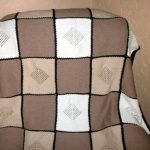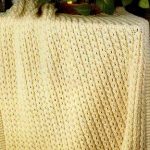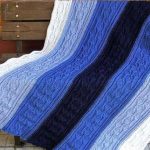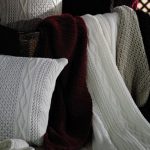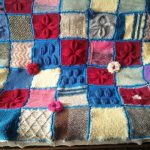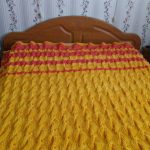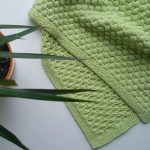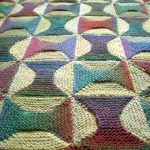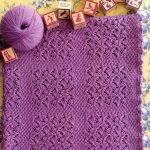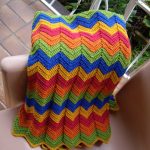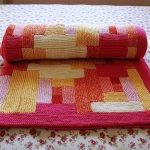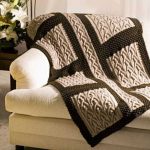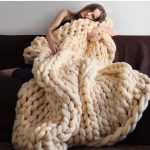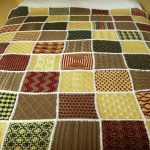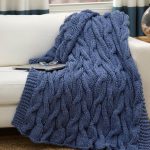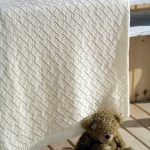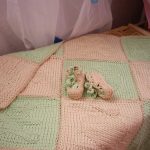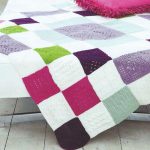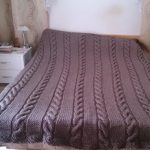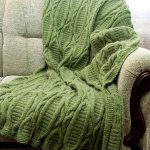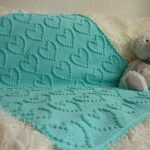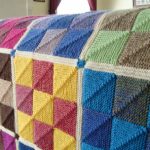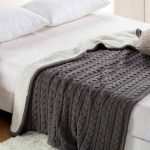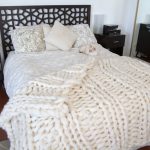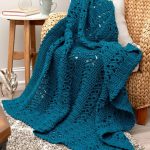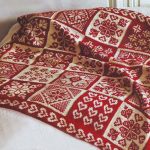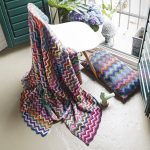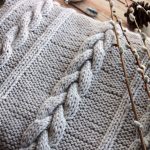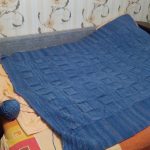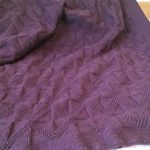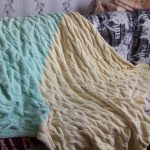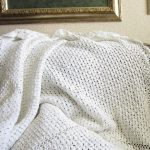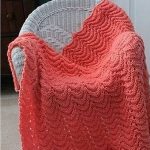Knit plaid knitting needles
As a rule, knitting a plaid with knitting needles is beyond the power of novice masters. Creating a similar product, it is required to put a lot of work and patience. But the result is not long in coming. The result is a blanket that warms family members during long winter evenings. It can be put on a chair or sofa, adding to the interior, creating a cozy atmosphere. If you are not familiar with knitting and this is the first job, choose the simplest version of the plaid with sectional patterns for learning. It is quite simple and will help to fill your hand.
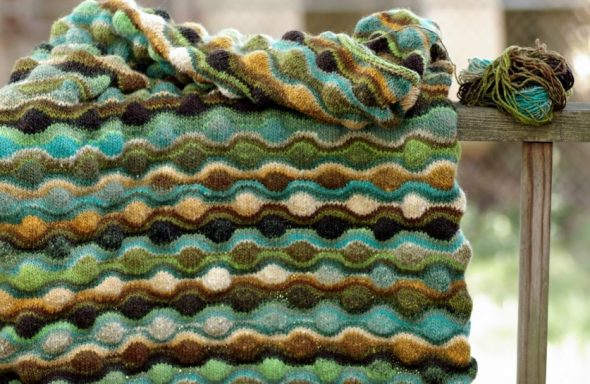
Plaid with convex circles, knitted in the technique of sectional knitting
Content
Best tool
Usually needlewomen use one of two tools for knitting.
- Spokes.
- Hook.
Of course, there is a knitting needle. However, this technique has not received much distribution, due to the great complexity of execution.
Hook
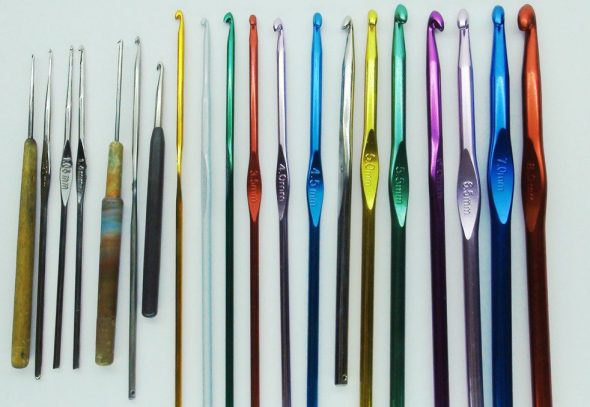
Crochet hooks come in different sizes and shapes.
Knitting with this wonderful tool is very simple, so it is perfect for beginners. He creates a variety of patterns. It is small, compact and does not take up much space.
The main disadvantage is ribbing and rigidity of products. A series of loops is not dense, creating a simple thing takes time.
Spokes
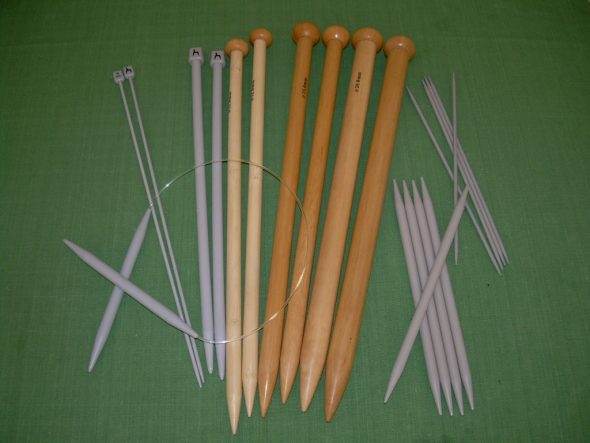
Knitting needles for knitting of different thickness and length
Suitable for more experienced craftswomen. It is difficult to knit them, but comparing with a hook, the process of creating air patterns becomes much more complicated. They allow you to knit great work in a short time (an experienced knitter can make up to four loops per second). Things are soft, smooth (all the loops, regardless of the tension will be equal to each other), pleasant to the skin.
There are several types of knitting needles.
- Open

Open or stocking knitting needles
Sold in a set of five pieces. Relatively short, have a bilateral point. The main purpose of this knitting in a circle. Suitable for the manufacture of mittens and socks.
- Closed.
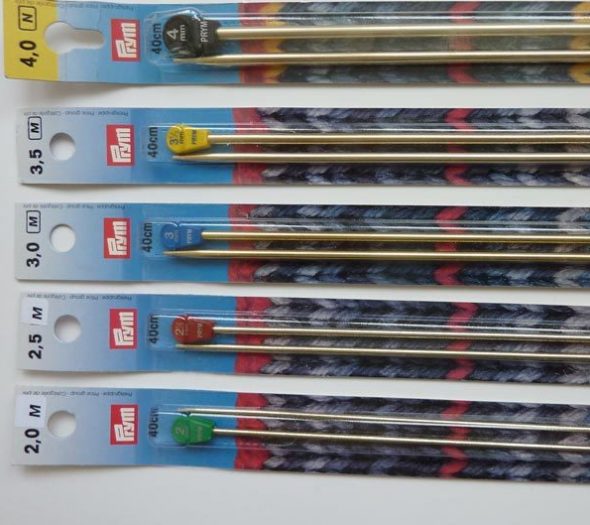
Straight, closed knitting needles
Sold by a pair. The longest of all knitting needles. They are comfortable to knit long, straight things, such as a scarf or sweater. Often used to create a rug.
- Ring

Circular or ring knitting needles
Represent two short sticks connected by a thin fishing line. They are versatile, able to replace any knitting tool. The disadvantages include:
- the need to accurately select the length of the fishing line;
- complex knitting technique.
Having decided to knit a plaid with needles, use the closed ones. They will prevent the loops from sliding backwards and allow you to create a variety of motifs. In addition, they are easier to change the color of the yarn.
Sectional patterns
The lightest of all kinds, it is plaid sectional patterns. A common variation is the "grain."
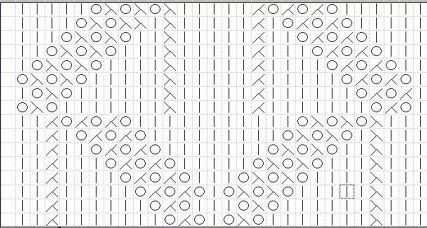
Simple grain pattern

Practical plaid knitting knitted from several colors of yarn in a simple pattern
Before creating it, mentally mark your blanket into equal sections, measuring 20 by 20 loops. Alternate the squares in chess order, using purl and face loops, until a pattern is formed.

Scheme simple pattern "Chess"
To tie such a blanket with the help of knitting needles you do not need to be an experienced craftswoman.If desired, you can make multicolored sections using a uniform binding. There are no restrictions on the size of squares, change them at will.
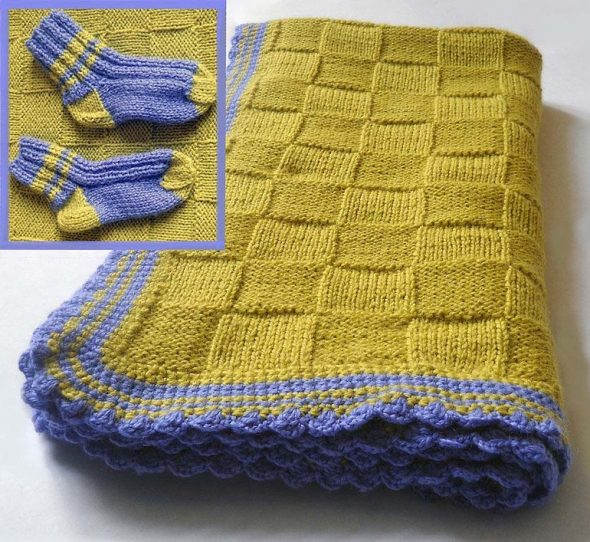
Even a knitter will knit a beautiful children's plaid with a chess pattern.
To choose the right size, type twenty loops, measure them with a ruler. Divide the desired length and width by the resulting number. So it is calculated, how many need to collect loops in the first row.
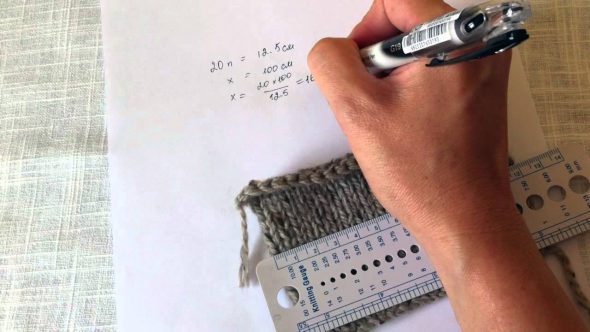
Calculation of the stitches for knitting
Zigzag plaid

Zigzag Pattern for Plaid
Stripes plaid knit gradually, without requiring stapling. Each strip can be knitted from different yarns, thereby creating a special pattern. Craftswomen with experience use the remnants of yarn other works.
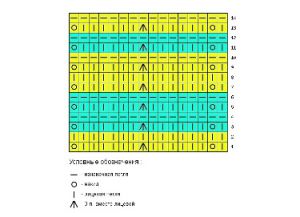
Zigzag Pattern
Description of work
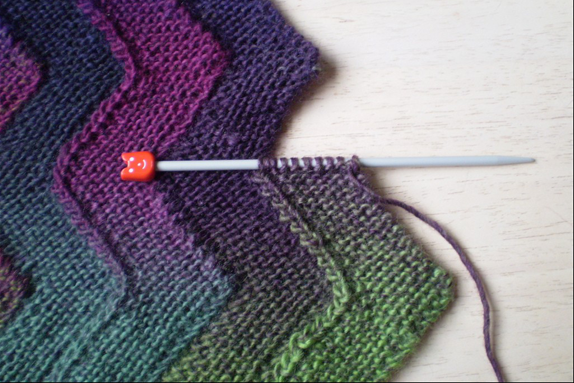
Zigzag knitting needles knitted from 10 loops
Type 10 loops on the knitting needles, knit ten rows, always removing one loop from the left and one from the right. Repeat this step, but adding to the left, and decreasing, to the right. So you get an uneven strip, like a zipper. Zigzags themselves can go diagonally or vertically (depending on your preferences). Periodically count the number of loops on the needles. There must always be the same number (in our case 10).
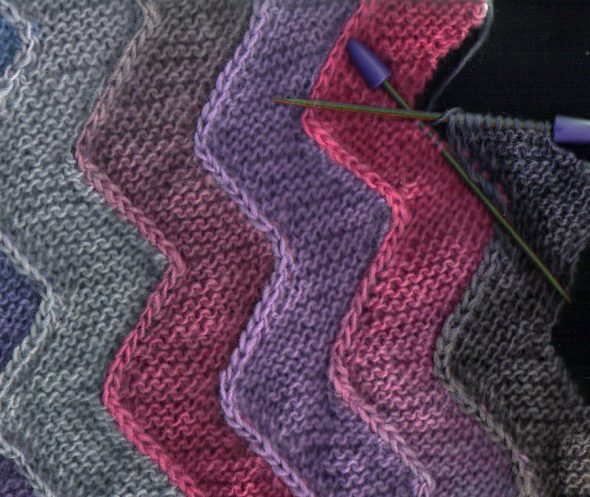
Beautiful zigzags knit simply and look beautiful
Reaching the desired length, close the loop nine loops, one should remain on the needle. Turn over the future masterpiece by 180 degrees and similarly knit the next zigzag, holding together with the previous one. Having connected the next blanket with the help of the needles, wash it with warm water.
Bulky leaves
Before you begin, you need to examine the "pearl" pattern. It is, along with rubber and braid, a highly demanded element that is used in many works.
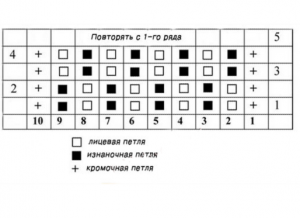
Scheme pearl pattern knitting needles
Tie a series of alternating facial and purl loops, and the next, do the same, but in a checkerboard pattern. The result will be a “pearl” pattern. It is worth noting, some craftswomen call it "sunflower seeds", "fish scales" or "gossamer".
Having studied the new element, proceed to knitting the rug with needles.
Dial 112 loops. Then tie 4 rows using a “pearl” pattern, then proceed to the leaves motif, leaving 4 knots on each side.
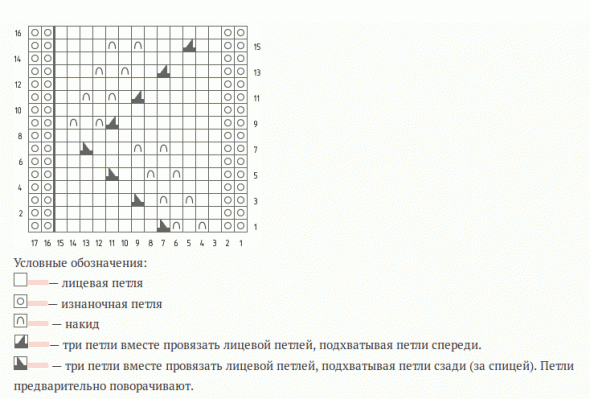
Pattern of knitting pattern “Leaves”
Knitting "leaves", you will need to divide the remaining canvas into 7 equal sections of 16 loops (for convenience, use pins).
1 row: 2 vmes. people. Left, 8 faces., 1 nakid, 4 faces., 2 in a month. people. to the right;
2 row: 2 vmes. people. To the left, 3 faces., 1 nakid, 3 faces., 8 n. Cross over to the right;
3 row: 2 vmes. people. Left, 6 faces., 1 nakid, 4 faces., 1 nakid, 2 faces., 2 in a month. people. to the right;
4 row: 2 vmes. people. Left, 1 face, 1 nakid, 6 faces., 1 nakid, 5 faces, 2 in. people. to the right.
So continue until you reach the desired length. Finish the blanket in four rows of the “cobweb”, replace the thread.
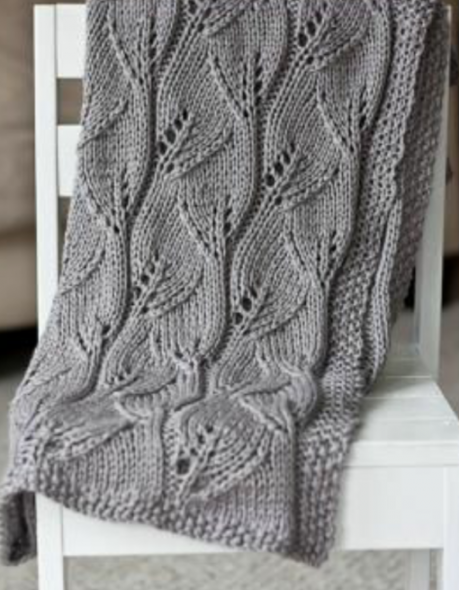
Beautiful gray plaid with knitted leaves
Of squares
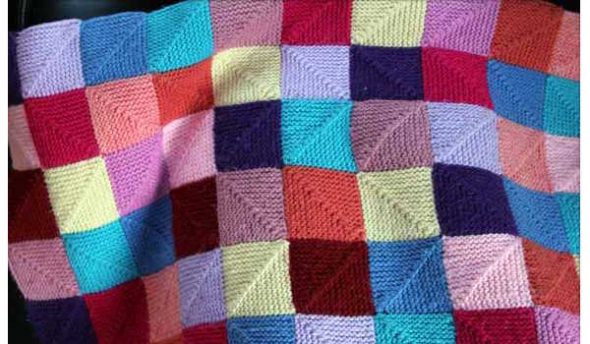
Blankets of colored squares knitted from the corner
Perhaps the most popular type of plaid. The main advantage is that it consists of small squares, stitched together by a thread. That is, you can knit sitting in a traffic jam and away. Comparing with traditional methods, knitting small areas does not require much time, space and strength.
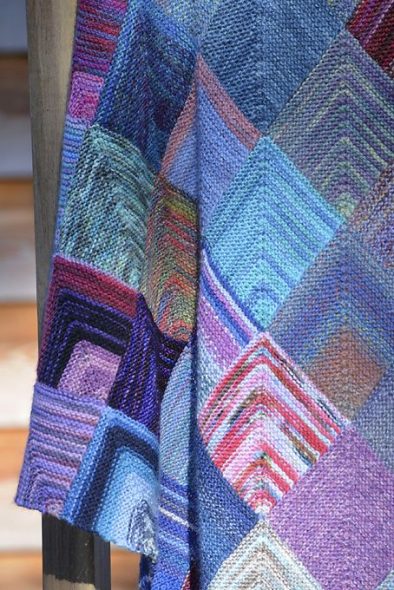
Plaid of colored squares with knitting needles can be knitted from yarn residues
You will need a large variety of yarn. Use remnants of previous products. Show imagination. The color scheme, shape, pattern and size of the plaid is unlimited. You can choose several matching colors and make a single composition. But no one will forbid taking the yarn in arbitrary order and create variegated unique patterns, complemented by various elements.
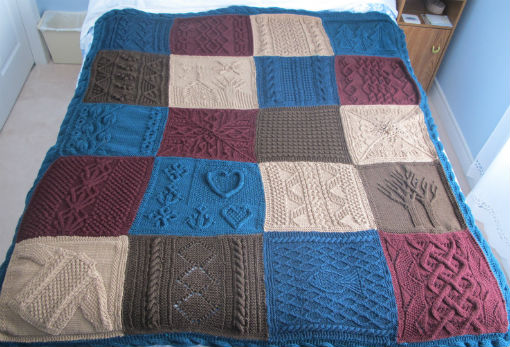
Plaid of squares, made in different knitting techniques from yarn of different colors
Another advantage is the ability at any time to alter the squares in a different order or replace them with new ones.
A single knitting scheme does not exist, try to invent a unique canvas.
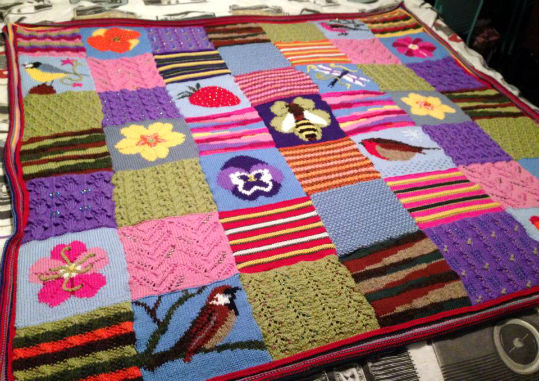
Beautiful children's blanket with simple and openwork squares and patterned squares
Binding
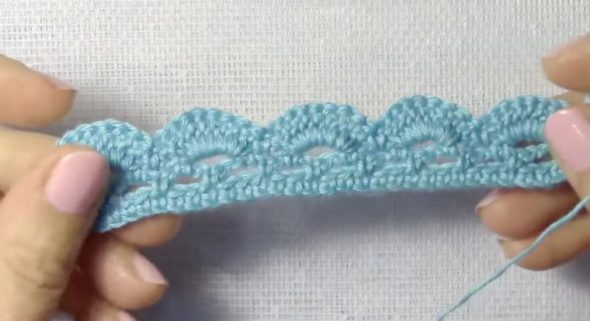
A simple crochet trim will add a finished look to the finished blanket.
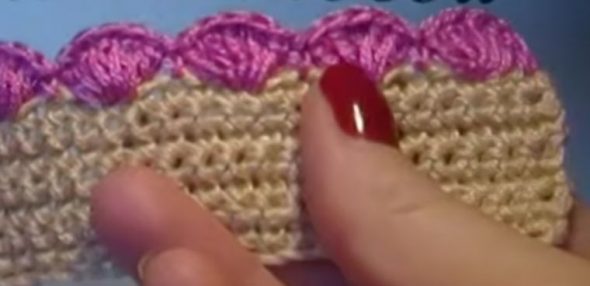
An interesting way to tie the edges of the product - shell
When finished with knitting needles, it is desirable to crochet it. This is necessary to increase the service life.
To do this, you will need a short hook (3 mm) and yarn, combined with the canvas.
1 row: tie the perimeter of the product st. b. n .;
2 row: alternate 2 air. Clause 3 Art. b. n .;
3 row: in the ring formed by air loops, knit a 5 st. n., then secure 1 tbsp. n (continue to the end of the row).
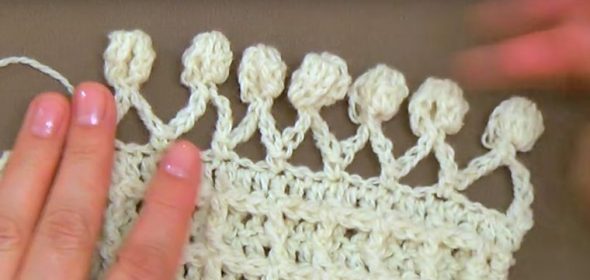
Beautiful edge trim with small pompons
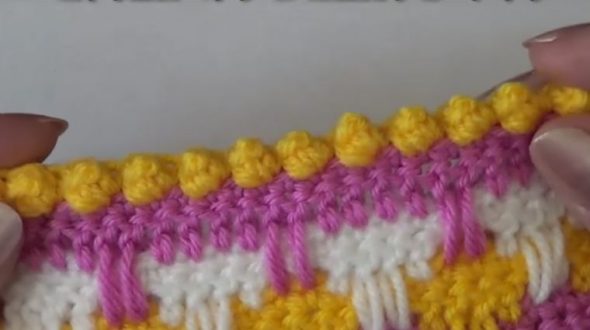
A simple but effective way to finish the edge - beads
Care
To keep the blanket pristine look, follow the tips.
- Keep knitted items in tight piles, otherwise the yarn will wear out.
- Before you send the blanket in the closet do not forget to wash it. Sweat and dirt attracts the mole.
- Put a moth cleaner in the cupboard.
- Always wash your items by hand. The washing machine is harmful to the product (stretches, confuses wool).
- Wash should be warm, but not hot water.
- Do not dry the blanket before batteries. It is better to spread it on a flat surface and leave it until dry.
Conclusion
As you can see knitting plaid with needles, albeit a difficult, but doable task. Patterns and types of patterns countless. You can always show imagination and create something new. Received items will be a great gift to your friends and relatives. The motley, openwork plaid will perfectly fit into the children's room, and a single-color, zigzag-shaped one will fit into any interior of a modern apartment.
Video: Plain plain knitting needles from thick yarn
50 ideas for knitting beautiful and comfortable knitting needles:
 Standard Kitchen Towel Sizes
Standard Kitchen Towel Sizes
 Plaid "Bunny with ears"
Plaid "Bunny with ears"
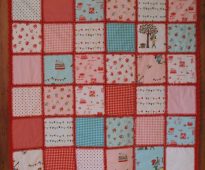 We sew a quilt with our own hands
We sew a quilt with our own hands
